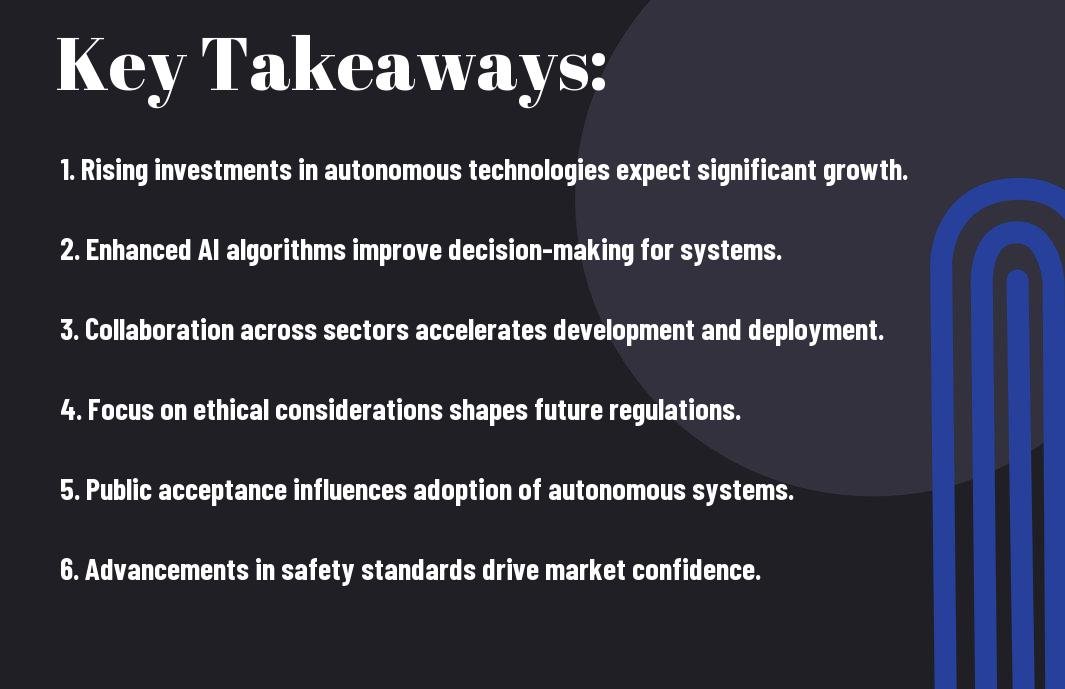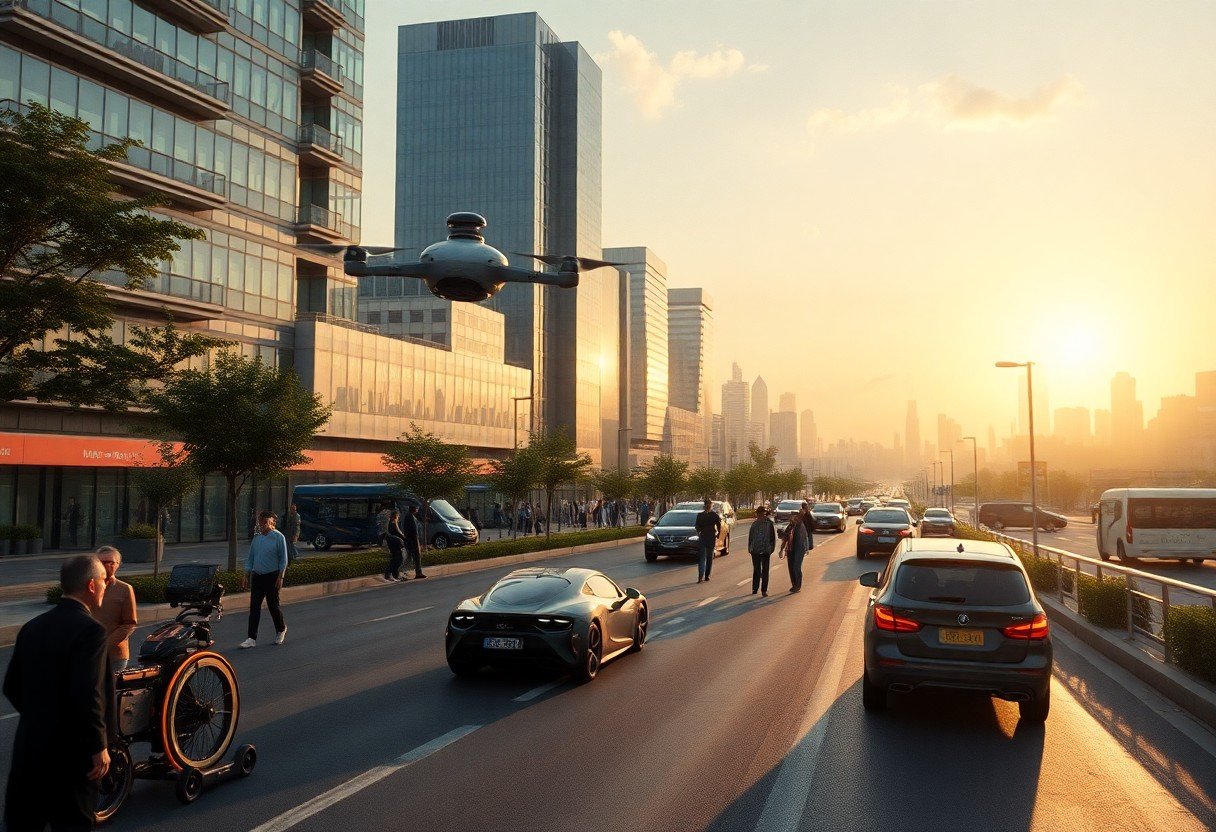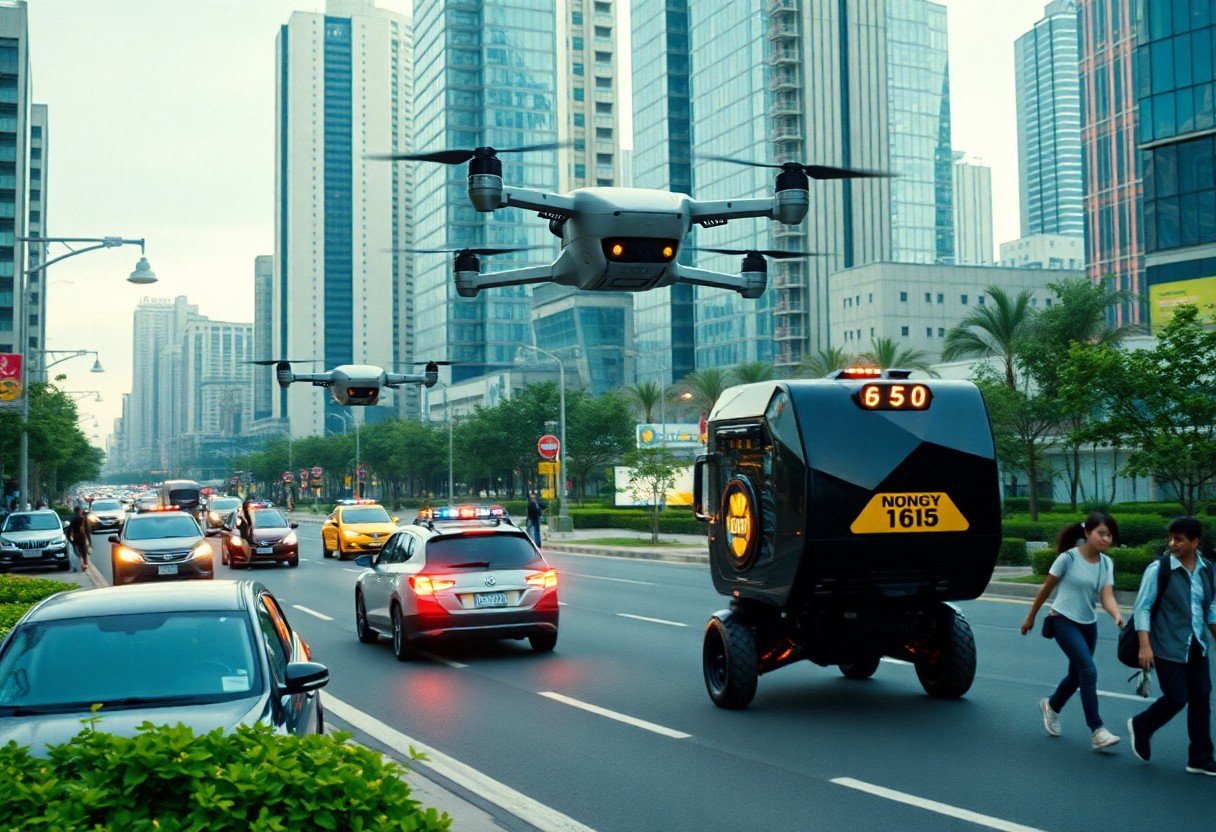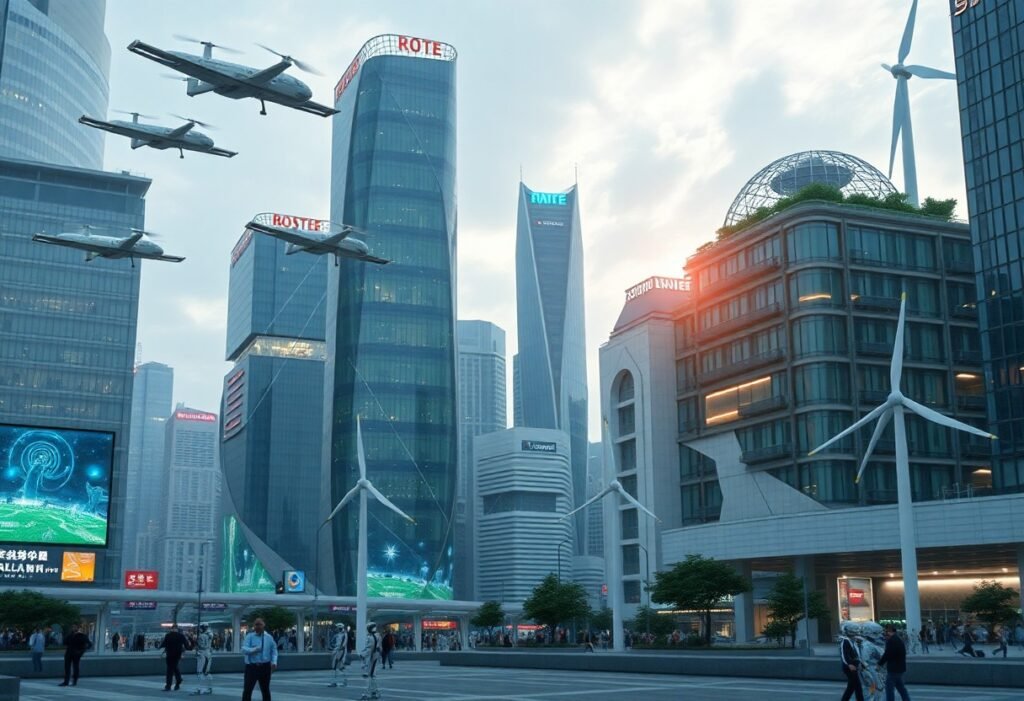Over the next few years, you may witness significant advancements in autonomous systems that could transform various industries. As we approach 2025, emerging technologies and innovations are setting the stage for a renaissance in autonomy, promising enhanced capabilities and efficiency in everything from transportation to healthcare. In this blog post, you will explore the factors driving this evolution, the potential benefits, and the challenges that may shape the future of autonomous systems, allowing you to stay informed and engaged in this exciting field.

Historical Context of Autonomous Systems
For centuries, humans have sought to automate tasks, laying the groundwork for today’s autonomous systems. This journey began with simple machines and evolved into complex algorithms capable of performing intricate functions. Understanding this history helps you appreciate the advancements made, as well as the challenges faced in developing technologies that can operate independently and efficiently in various fields.
Evolution of Automation Technology
After the Industrial Revolution, the introduction of mechanization revolutionized industries and paved the way for various automation technologies. Over the decades, innovations such as programmable logic controllers (PLCs), robotics, and artificial intelligence marked significant steps in enhancing automation. You can see how these developments have culminated in the sophisticated autonomous systems we encounter today.
Key Milestones in Autonomous Systems Development
Above all, recognizing key milestones helps you understand the path that autonomous systems have taken from conception to implementation. Milestones include the introduction of the first robotic arms in the 1960s, advancements in machine learning in the 1980s, and the deployment of self-driving cars in the 21st century, each reflecting a significant leap in capabilities.
Technology has steadily evolved, with each milestone providing building blocks for the next. The emergence of intelligent agents and advanced algorithms has transformed how autonomous systems function, enabling real-time decision-making and improved interaction with their environments. As you look to the future, it’s important to recognize these accomplishments as they shape the potential renaissance of autonomous systems by 2025.
Current State of Autonomous Systems
You may notice that autonomous systems are currently making significant strides in various sectors, from healthcare to transportation. Innovations are being rapidly adopted, paving the way for enhanced efficiency and productivity. With predictions about transformative changes, you might be interested in insights about THE COMING RENAISSANCE OF 2050. When technology … will reshape the landscape.
Industry Applications and Trends
With advancements in machine learning, autonomous systems are increasingly integrated into industries such as logistics, agriculture, and manufacturing. You will find that these applications streamline operations, reduce costs, and enhance overall productivity. As more businesses embrace these technologies, trends indicate a significant shift towards automation in everyday tasks.
Regulatory and Ethical Considerations
Along with the growth of autonomous systems, you’ll see the emergence of debates surrounding their regulation and ethical implications. Discussions around data privacy, accountability, and potential biases in AI systems are gaining traction, leading to heightened scrutiny in your industry.
Even as autonomous systems are adopted widely, the ongoing dialogue about their ethical frameworks requires your attention. It involves ensuring that these technologies are developed and utilized responsibly, safeguarding against misuse while promoting fairness and transparency. For you, staying informed about these regulatory developments is crucial in anticipating the challenges and opportunities that lie ahead.
Technological Innovations Driving Change
Now is an exciting time for autonomous systems, as numerous technological innovations are paving the way for unprecedented advancements. From smarter AI to more sophisticated sensors, these innovations are set to revolutionize the way we interact with machines. By embracing these changes, you are positioning yourself at the forefront of this rapidly evolving landscape.
Advancements in AI and Machine Learning
Technological breakthroughs in AI and machine learning are reshaping the autonomous systems landscape. Enhanced algorithms enable machines to learn from vast datasets and make informed decisions in real time. As a result, you can expect smarter automation, improved efficiency, and the ability to solve complex problems that were previously thought impossible.
Breakthroughs in Robotics and Sensor Technologies
On the horizon, exciting breakthroughs in robotics and sensor technologies promise to enhance the capabilities of autonomous systems. These advancements are enabling machines to perceive their environments more accurately, leading to safer and more efficient interactions. You’re likely to see applications ranging from self-driving vehicles to drones that can navigate challenging terrains with ease.
Due to these technological advancements, robotics and sensor technologies are more advanced than ever. Enhanced sensors allow machines to gather extensive data on their surroundings, significantly improving navigation and decision-making processes. As these sensors become smaller, cheaper, and more efficient, they’re opening doors to a wide range of applications in various industries. By investing in these innovations, you will not only elevate your understanding but also contribute to the evolution of autonomous systems in meaningful ways.

The 2025 Forecast: Opportunities and Challenges
Despite the promising advancements in autonomous systems, 2025 will likely present a complex landscape of both opportunities and challenges. The integration of AI, robotics, and automation will open new avenues for innovation, yet regulatory hurdles, ethical considerations, and public acceptance may impede widespread adoption. As these technologies evolve, it’s vital to navigate these challenges while strategically leveraging opportunities to enhance productivity and efficiency in various sectors.
Market Predictions and Economic Impact
One of the most exciting forecasts for 2025 involves the substantial growth of the autonomous systems market. Analysts predict an exponential increase in investment and adoption across industries, leading to improved economic performance and job creation in tech-centric sectors. This growth could empower your business by enhancing operational efficiency, reducing costs, and unlocking innovative services that adapt to consumer demands.
Potential Barriers to Adoption
To fully realize the benefits of autonomous systems, you must be aware of the potential barriers that could hinder their adoption. Slow regulatory processes, workforce displacement concerns, and technological limitations are significant factors that may delay widespread integration. Addressing these issues requires a collaborative effort between the public and private sectors to create a conducive environment for innovation.
This landscape of potential barriers is vital to consider when planning for the future of autonomous systems. Regulatory frameworks may lag behind technological advancements, creating uncertainty for businesses keen on investing in these solutions. Additionally, workforce displacement fears can provoke resistance, highlighting the need for reskilling programs to aid those affected. You must also take into account the cybersecurity risks associated with increased automation, as these systems become integral to your critical infrastructure. Overcoming these hurdles will be pivotal in capitalizing on the transformative potential of autonomous systems.
Case Studies of Emerging Autonomous Systems
Not only are autonomous systems advancing rapidly, but specific case studies highlight their transformative potential. For instance:
- Waymo’s autonomous taxi service in Phoenix sees over 10,000 rides daily.
- Amazon’s delivery drones aim to reduce delivery times to under 30 minutes.
- Boston Dynamics’ Spot robot is used in over 50 countries, mainly in construction and security.
- Autonomous farming equipment, like those from John Deere, can increase crop yield by up to 25%.
For more insights, explore Courses | Department of English Language and Literature.
Transportation and Mobility Solutions
About the autonomous vehicle sector, companies like Tesla and Waymo are innovating beyond traditional driving, promising not only safety but also enhanced traffic management, which could ultimately decrease congestion in urban areas.
Healthcare Innovations
Among the most impactful applications of autonomous systems are in the healthcare sector, where innovations are redefining patient care and operational efficiency.
Systems like robotic-assisted surgeries, exemplified by the da Vinci Surgical System, have improved precision in complex procedures. Additionally, AI-driven predictive analytics are now capable of identifying patient deterioration 48% earlier than traditional methods. Furthermore, autonomous delivery drones are ensuring timely delivery of medical supplies, especially in remote locations. These advancements are fostering a future where healthcare becomes more proactive, personalized, and accessible for everyone.

The Role of Collaboration in Advancing Autonomous Systems
Keep in mind that collaboration is the cornerstone of innovation in the field of autonomous systems. By fostering partnerships between various stakeholders, you can elevate research, enhance technological developments, and accelerate deployment. Emphasizing teamwork allows you to leverage shared knowledge and resources, driving progress forward in a collective manner that individual efforts alone cannot achieve.
Public-Private Partnerships
Partnerships between public entities and private companies play a significant role in developing autonomous systems. You can benefit from these collaborations as they combine government oversight and funding with the innovative drive and efficiency of the private sector, creating an ecosystem that nurtures advanced technologies. This synergy facilitates regulatory framework development, testing environments, and broader access to resources.
Global Research Initiatives
Collaboration across borders is imperative to the progress of autonomous systems. Global research initiatives ensure that you can tap into a diverse pool of talent and ideas, enabling cutting-edge advancements. By pooling resources and expertise, researchers and innovators work together to tackle complex challenges, create standards, and promote ethics in technology deployment.
Hence, the importance of global research initiatives cannot be overstated. Engaging in these collaborative projects gives you access to large-scale studies, shared insights, and an international network of experts. The diverse perspectives and experience from different regions can inspire innovative solutions and best practices in developing autonomous systems, paving the way for more comprehensive and acceptable technologies. By participating in these initiatives, you contribute to a framework that accelerates the maturation and societal acceptance of autonomous systems worldwide.
Conclusion
With these considerations, you can see that 2025 has the potential to be a pivotal year for autonomous systems. As technology continues to evolve and societal acceptance grows, your engagement with these systems could transform industries and daily life in unprecedented ways. The advancements in AI, robotics, and infrastructure all suggest that a renaissance in autonomous capabilities is not just possible, but likely. Embracing these changes will be necessary for you to fully leverage the benefits that a new era of autonomy offers.









